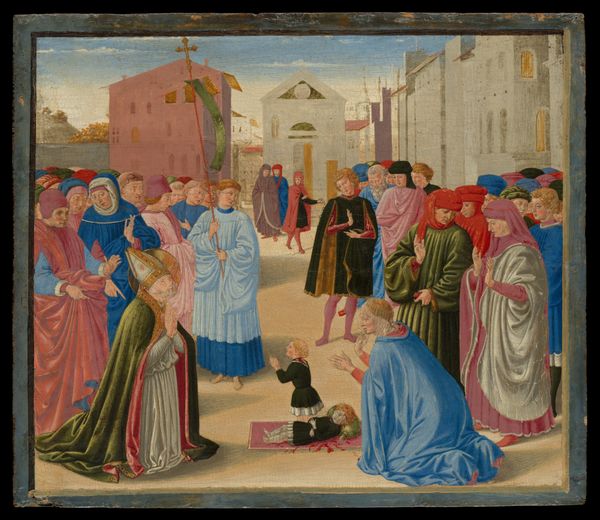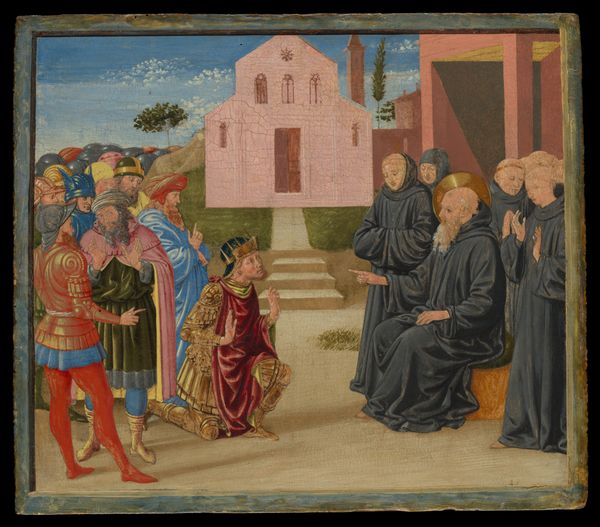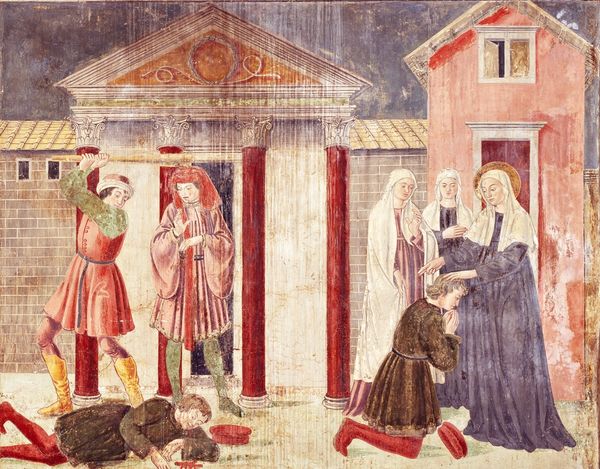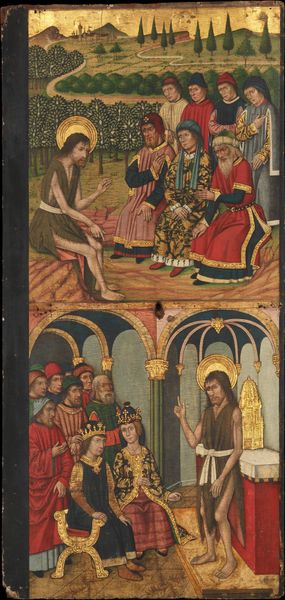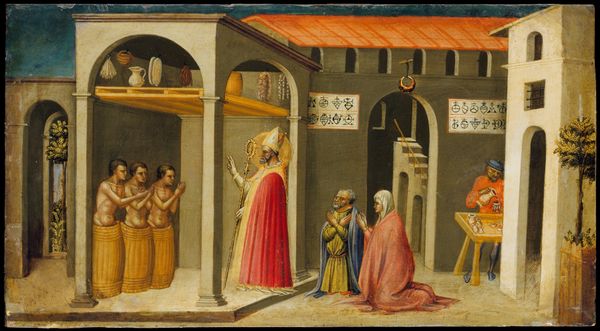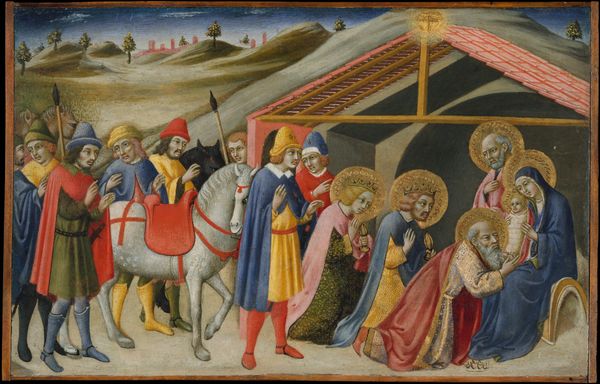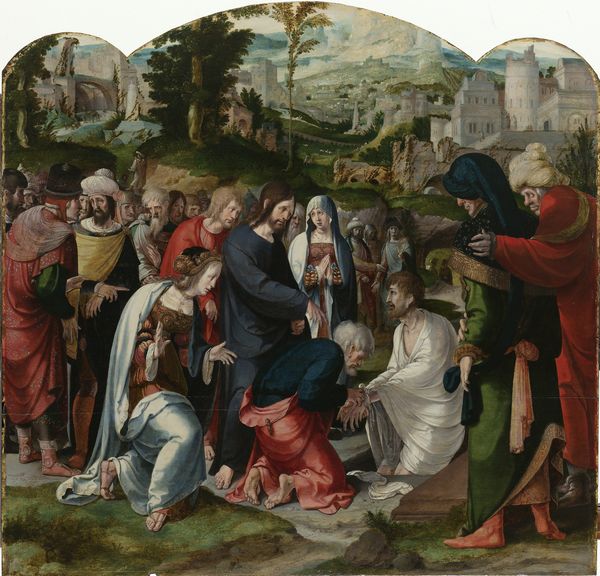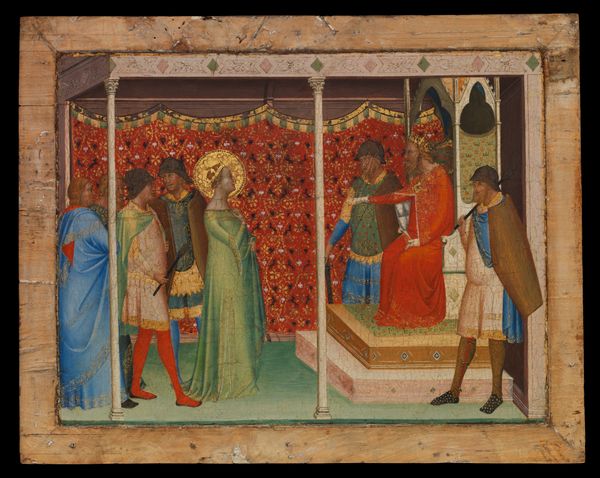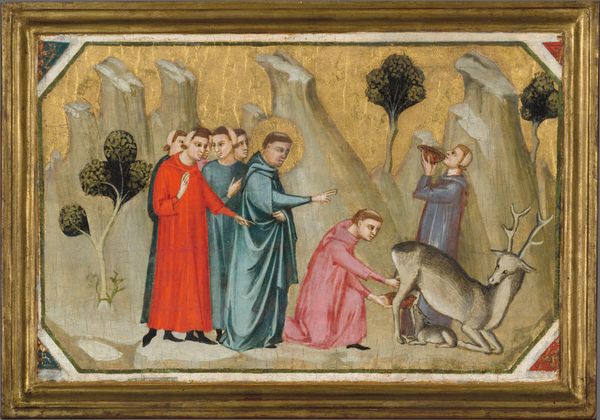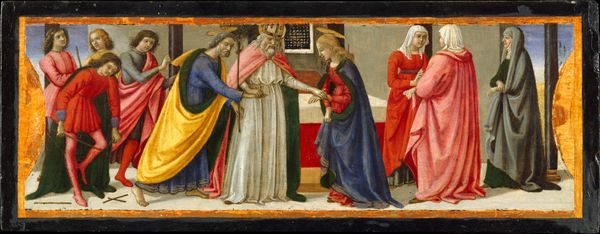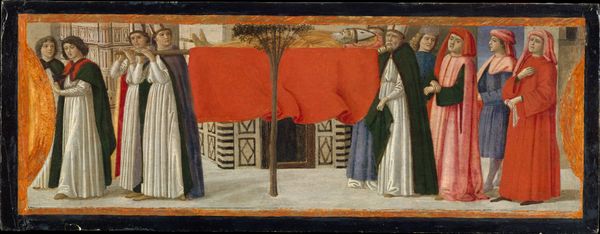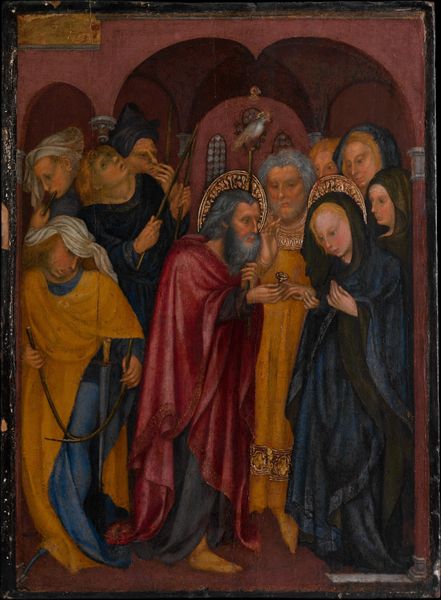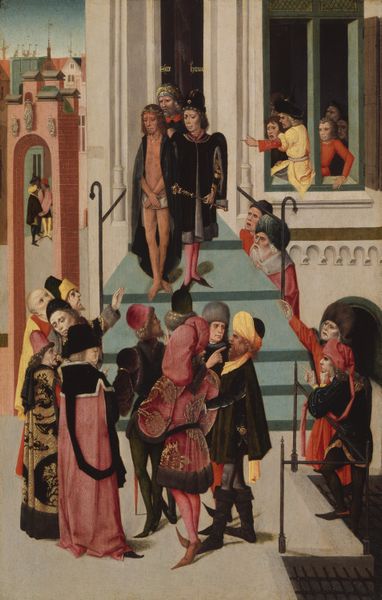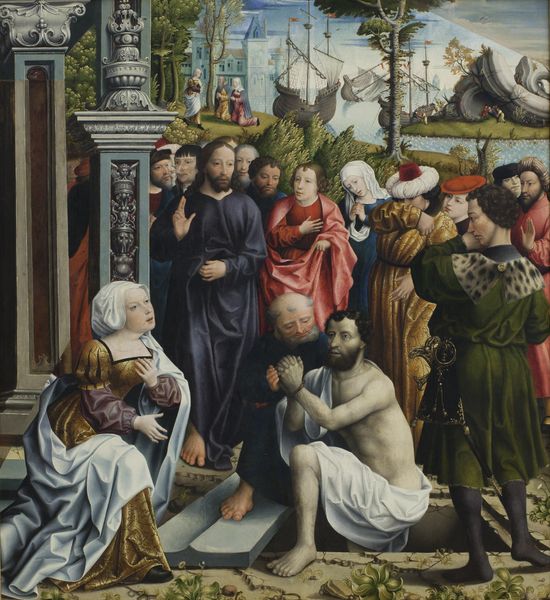
Saint Dominic Resuscitating Napoleone Orsini 1467 - 1474
0:00
0:00
panel, painting, oil-paint
#
panel
#
narrative-art
#
painting
#
oil-paint
#
figuration
#
mural art
#
oil painting
#
italian-renaissance
#
early-renaissance
Dimensions: 14 x 17 1/2 in. (35.6 x 44.5 cm)
Copyright: Public Domain
Editor: Here we have Bartolomeo degli Erri’s “Saint Dominic Resuscitating Napoleone Orsini,” created sometime between 1467 and 1474, and crafted using oil paint on a panel. I'm struck by the contrast between the pale, almost dreamlike colors and the rather dramatic scene depicted. What structural elements define this composition for you? Curator: Note how the architectural setting, rendered in pale hues, is not merely a backdrop. Consider the intentional contrast in color saturation. The figures closest to the viewer employ deeper reds, blues and greens. Can you observe the perspectival organization within this pictorial space? How do the orthogonal lines converge, and what effect does that create? Editor: The lines seem to guide my eye toward the center of the panel, focusing on the Saint and the figure being revived. The pale shades further into the painting give the entire space a shallow appearance. Curator: Precisely. It is a flattening of the spatial field. See also how the composition is divided into distinct zones by changes in color and form. Consider the stark differentiation between the narrative happening towards the rear with one distinct focal point, versus the foreground grouping of individuals around the Saint with another focal point in the faint aureola. The panel creates internal contrasts that offer differing planes of visual access. What visual relationships or geometric patterns do you see recurring? Editor: Well, now that you mention it, there are several groupings of three: the triad of standing figures at the left side, Saint Dominic between the body and the horse. The repetition makes the resurrection feel very separate but important to the standing figures’ business. It does not read as spontaneous but constructed. I now see your point about planes of visual access. What would you say we have learned about Early Renaissance works by carefully studying the work of Erri? Curator: Formal analysis reveals not only compositional strategies but also Early Renaissance methods for creating meaning and engagement with its patrons through both subject and internal structural forms. We observe the intentional layering of narratives and manipulation of the pictorial plane to foster active visual interpretation and reflection.
Comments
No comments
Be the first to comment and join the conversation on the ultimate creative platform.
